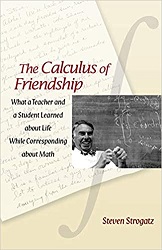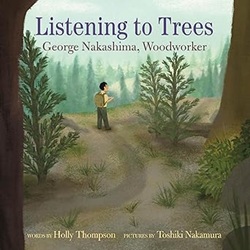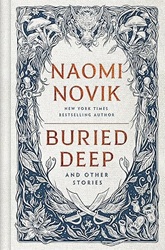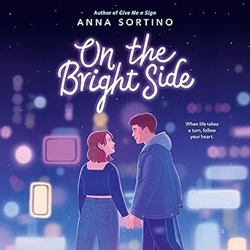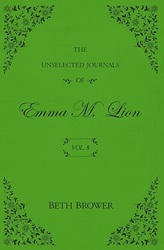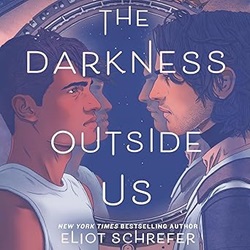Review of The Calculus of Friendship, by Steven Strogatz
What a Teacher and a Student Learned about Life While Corresponding about Math
by Steven Strogatz
Princeton University Press, 2009. 166 pages.
Review written September 9, 2021, from a book ordered via Amazon.com
Starred Review
This book is the story of the correspondence the author – a professor of Mathematics at Cornell University – carried on with his high school calculus teacher for over thirty years.
Here’s how he introduces the book:
For the past thirty years I’ve been corresponding with my high school calculus teacher, Mr. Don Joffray. During that time, he went from the prime of his career to retirement, competed in whitewater kayak at the international level, and lost a son. I matured from teenage math geek to Ivy League professor, suffered the sudden death of a parent, and blundered into a marriage destined to fail.
What’s remarkable is not that any of this took place – such ups and downs are to be expected in three decades of life – but rather that so little of it is discussed in the letters. Instead, our correspondence, and our friendship itself, is based almost entirely on a shared love of calculus.
It never occurred to me how peculiar this is until Carole (I’m happily remarried now) teased me about it. “You’ve been writing to him for thirty years? You must know everything about each other.” Not really, I said. We just write about math problems. “That is such a guy thing,” she said, shaking her head.
This Prologue is more honest than the subtitle. This is a book about awesome insights into and about calculus – clever, insightful, and challenging problems – and the beauty of math. It doesn’t say a whole lot about life lessons – and yet their friendship and personalities do shine through.
And there’s some lovely mathematics here, well-explained – at least I think so. I am sad to say that in many places, the math went over my head. I’m a former math major with a master’s degree in math who taught college math for ten years – but I didn’t remember things about infinite series and infinite integrals and other things discussed here. And I’m a little appalled with myself that I didn’t have the desire to go look up what I didn’t understand.
I am, however, wishing that this book existed when I was a young hot-shot calculus student. It would have showed me that math is not a finite subject and that even lofty math professors still find plenty of ideas to play with, going far beyond textbooks.
And yes, there are some lovely insights about the friendship between a teacher and his student. The correspondence began when Steven Strogatz started sending interesting math problems to his former teacher and then explained them. He shares an insight at the back of the book about what his teacher gave him:
He let me teach him.
Before I had any students, he was my student.
Somehow, he knew that’s what I needed most. And he let me, and encouraged me, and helped me. Like all great teachers do.
Hmmm. I do know of a young math major who just started at Virginia Tech. I think he’d be among the ideal audience for this book – reading about how, for those who love it, math never runs out of fascinating beauty.
Oh, and full disclosure: I was disposed to like this book because the author found my mathematical knitting posts and talked about them on Twitter. So now I’m happy to promote his book – both things are about the beauty of math.
stevenstrogatz.com
press.princeton.edu
Find this review on Sonderbooks at: www.sonderbooks.com/Nonfiction/calculus_of_friendship.html
Disclosure: I am an Amazon Affiliate, and will earn a small percentage if you order a book on Amazon after clicking through from my site.
Disclaimer: I am a professional librarian, but I maintain my website and blogs on my own time. The views expressed are solely my own, and in no way represent the official views of my employer or of any committee or group of which I am part.
What did you think of this book?
